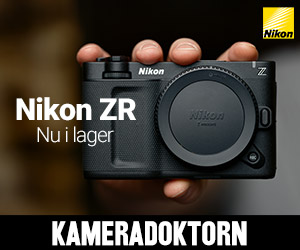New Tri-X
-----Original Message-----
From: FineArtPhotoSupply [mailto:
[email protected]]
Sent: Wednesday, January 07, 2004 3:50 AM
To:
[email protected]
Subject: January 2004
Fine Art Photo Supply
E-Newsletter
January 2004
Welcome to 2004. I hope all of you had a marvelous holiday season and are ready to attack the new year with vigor. I’m going to push very hard to get our large format camera bags introduced this year, and to have them manufactured in the US. I know it’s been a while since I had the prototypes designed, and first announced this… bear with me please. I don’t want to sell junk.
Lots of questions about Kodak and the new Tri-X sheet films so lets start there.
“New” Tri-X
In 2002, I was a member of the original team, that was called in by Kodak, to serve as consultants for the new Tri-X sheet film. We were given 2 boxes of film, not told which was which, but only that box A should be like the traditional Tri-X and box B needed 20% more development time than we had given for the old Tri-X.. It turned out that – I’m sure you’ve figured this out – box A was the old Tri-X and box B was the new stuff.
I loaded both films into two sets of holders and went out to photograph in one of the old city parks near the University of Rochester. I made about 10 pictures that day, and used one of each sheet for each picture – a total of 20 negatives. Each set of negatives was developed in HC-110, with the “box B” set developed for 20% longer (for my Schneider 210mm lens, in dilution D that is 5 minutes for the old stuff [A] and 6 minutes for the new
).
Response-wise, the two films matched exactly. No difference. I was amazed, even, that Kodak’s recommendation for development time for the new emulsion was so accurate. Two negatives from the same subject looked identical. Proofs made of all the negatives showed that the new film behaved exactly like the old.
The new Tri-X isn’t really new. It’s the exact same emulsion as the old Tri-X, except that it’s been modified to be manufactured with more automated equipment, it has slightly longer development times, and a few other slight differences. The most important of the latter being that the emulsion is now pre-hardened. Pre-hardened means you no longer need an acid environment for fixer to support the presence of hardener, because you no longer need hardener. Pre-hardened means you can now fix the film in an alkaline fixer like ArtFix.
Why should you do that? Because ArtFix won’t remove image silver, washes out faster, and in general is much nicer to film (and paper). And water is just as good of a stop bath as acetic acid – for films and papers. It is – try it.
Click here for more information on the nasty habits of acid fixers.
Summing up on the Tri-X. There is no problem with handling the new film, just be sure to increase the development time 20%. With the new Tri-X, we are enclosing a separate sheet describing the new film and it’s differences, and we’ll continue to do this until Kodak’s inventory of the old stuff is used up.
*
Also, regarding Kodak… (I know I’ll get in trouble for this, but I’m servicing a market I have a responsibility to – yes?). Kodak has a long history of having a mega-giant corporation mentality. For 50 or so years, they have been primarily interested in growth, overall size, and how Wall Street regarded their direction.
Very much like the U.S. Auto Industry, some business analysts have said Kodak was always more interested in the price of their stock, and in relatively short-term profits than in their customers ( “…we’re Kodak, just shut up and do what we tell you.” ); especially professionals and fine artists, who were interested in higher grade applications than cranking truckloads of consumer-grade color negative film through their cameras. (I know profits are essential; but they are a scoreboard, not the game plan. The game plan should be centered on the customer, and long time perspective - Toyota and Honda). As long as mainstream photography was film and chemical based, since Kodak controlled so much of the market, this really didn’t affect their products much. They’d discontinue a B&W paper once in a while, or a film size, but that was about it. The consumer color film and processing cash machine could support it.
Now, things are much different. As all business is changing with lightning speed, digital photography is now the mainstream technology and some would say Kodak is scrambling desperately to catch up. Kodak itself has recently said it is placing more emphasis on digital photography, since that is where all the consumer grade color film users are headed. (What about the new black and white coating facility? That was a very advantageous investment for tax purposes, and would still be even if they closed it tomorrow). Kodak is perched very precariously right now, in terms of chemical based photography. If Wall Street says “Boo!”, who knows what will happen…
Where am I going with all this? Kodak’s emphasis, market-wise, has always been where they can make the most money in the shortest possible time. – “keep Wall Street happy”. I don’t know what they are likely to do in the near future, but I’ll offer this suggestion. If you are a fine art black and white (or color) photographer, and your primary source of film and chemistry are those manufactured by Eastman Kodak, develop a workable alternative. Develop a workable alternative before you absolutely have to, because in the (near?) future, you may have to.
Use both at the same time until you are sure the alternative will work as well as the Kodak stuff. You can still use the Kodak stuff primarily and the alternative occasionally, but you’ll be ready. I would suggest Ilford HP-5 and DD-X. Use whatever you like, but what’s important is to have an alternative. Rochester is already dotted with skeletons of formerly glorious film, paper, camera and lens manufacturers…
Be smart.
**************************************
I have removed the rest of this message.
/Erik Schalin
**************************************
Enjoy the winter!
Anthony
www.fineartphotosupply.com






